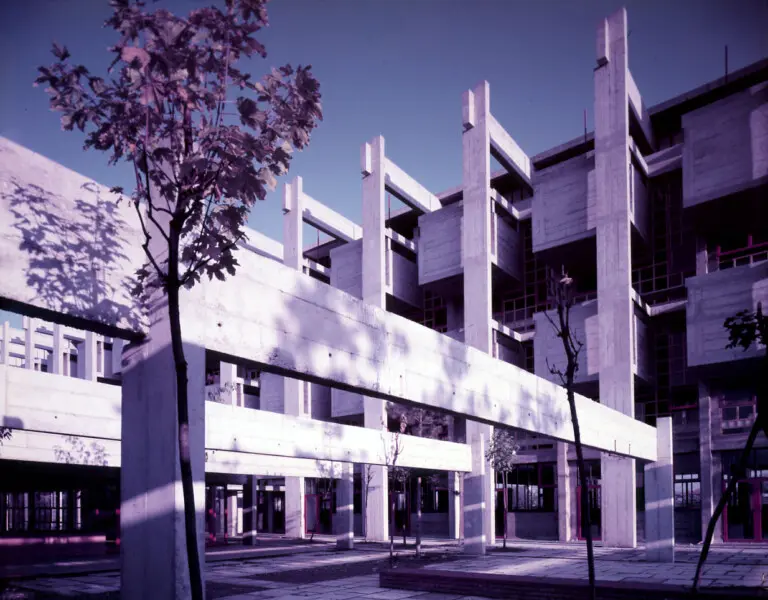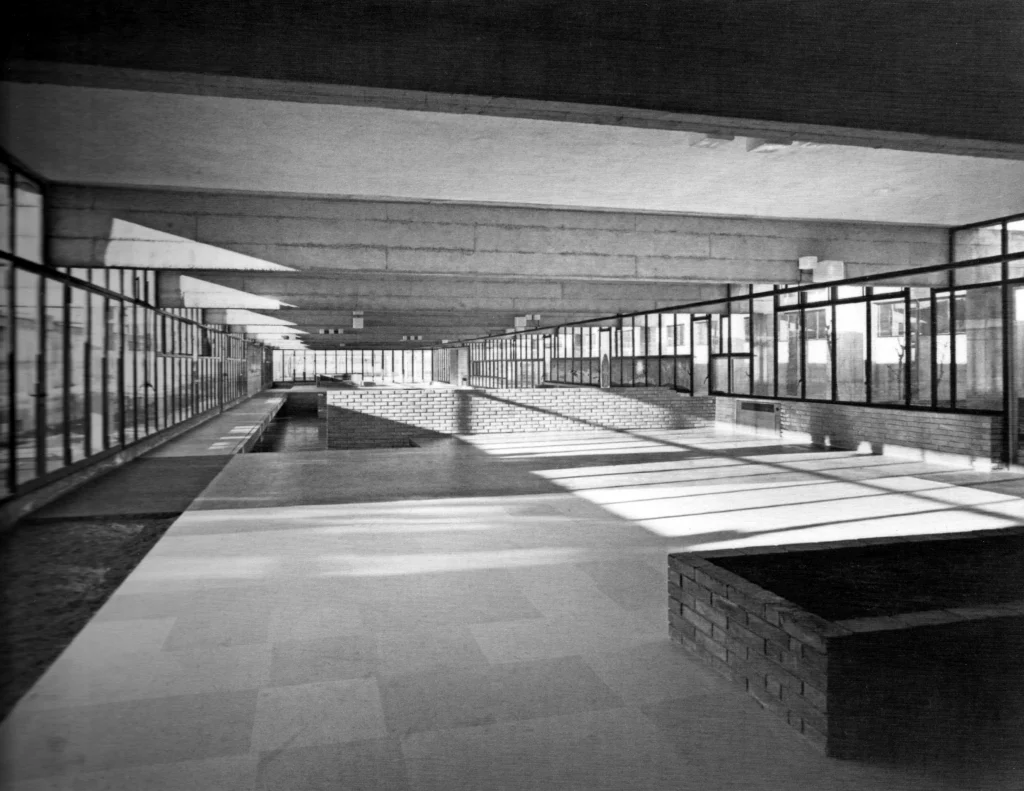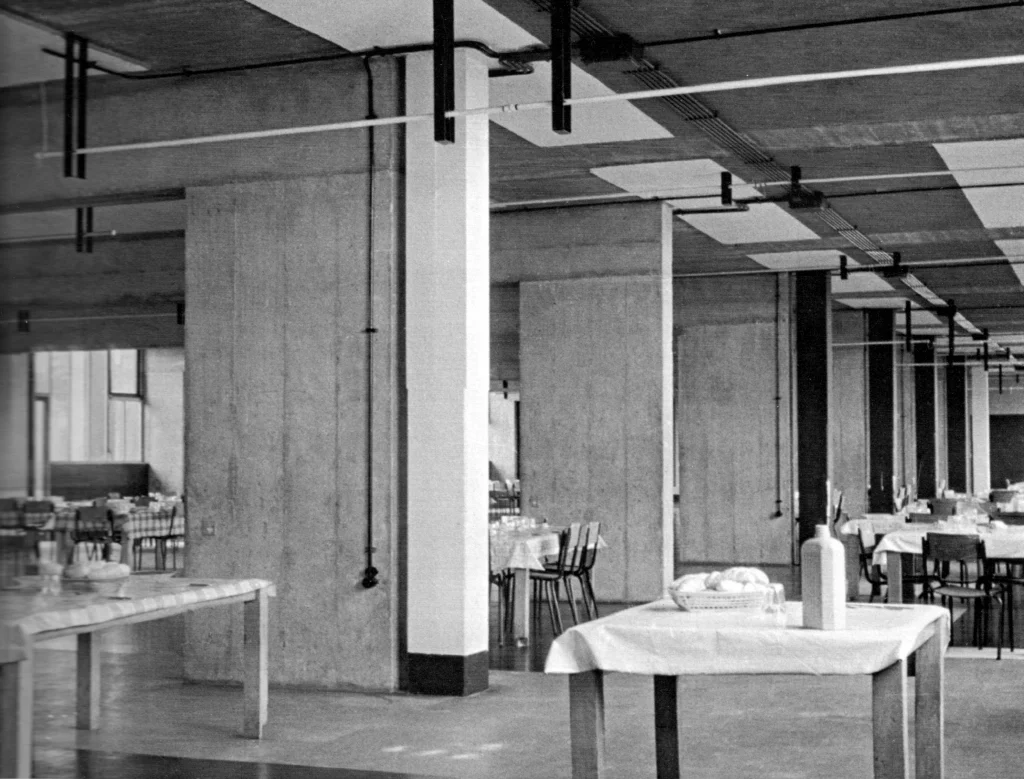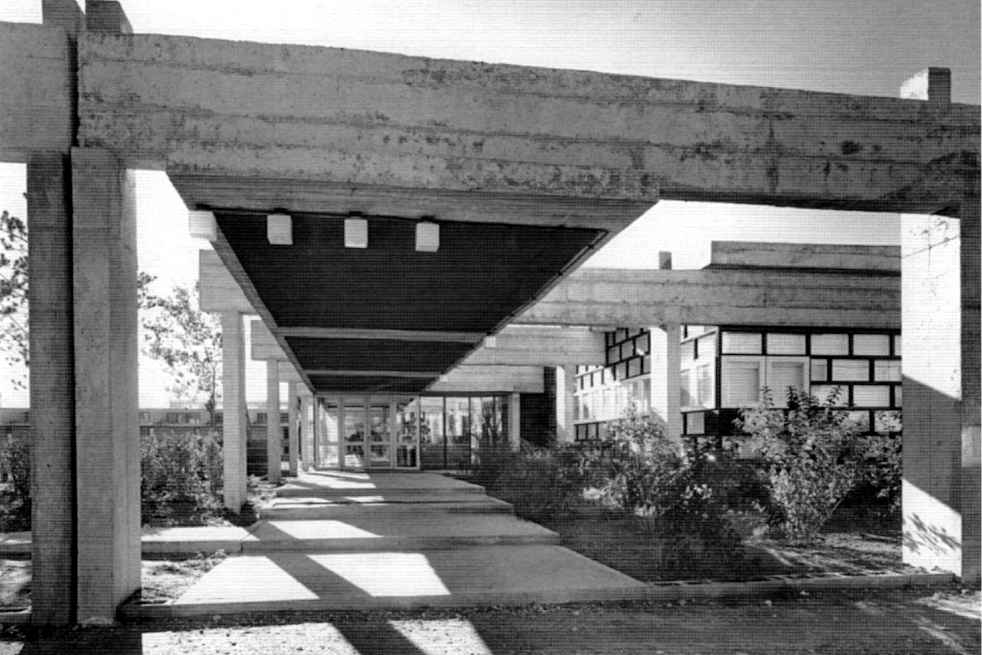Marchiondi-Spagliardi Institute: history of a brutalist work of art
The former Marchiondi-Spagliardi Institute, built between 1953 and 1957 in the Baggio district of Milan, is a complex consisting of several buildings covering an area of approximately 22,000 square meters, designed by architect Vittoriano Viganò.
Created as an alternative to reform schools, to provide an education to young people from disadvantaged backgrounds, the complex functional program finds its architectural unity in the expressive choice of structures, which takes the form of a free, open layout with buildings in contact with the outside world. It is divided into four building complexes consisting of seven buildings, which are connected but independent: the residential center for the children (boarding school), the offices and common areas, the school center, and the teachers’ residences.
The original construction elements and materials were chosen by Viganò for their primary character, which maintains its individuality and specificity: all load-bearing structures are made of reinforced concrete beams and pillars, the floors are made of brick and concrete, the floors are made of concrete, the walls are made of masonry plastered with cement mortar, and the large windows are made with iron frames and grilles.
Due to its particular and predominant use of reinforced concrete, the building is considered one of the most significant examples of Italian “brutalism”, an architectural style characterized by the insistent use of poor materials, and therefore also of ethical value, to achieve a simplified, anti-elegant, and unfinished aesthetic.
Defending his design choices, the author will support the thesis of empowerment and the transmission of new educational principles, including through the figurative, chromatic, and material power of architecture.
The structure began its inexorable decline following its decommissioning in the early 1980s and the definitive closure of the IPAB – Opera Pia Istituti Riuniti Marchiondi – Spagliardi e Protezione dei Fanciulli.
Gallery










